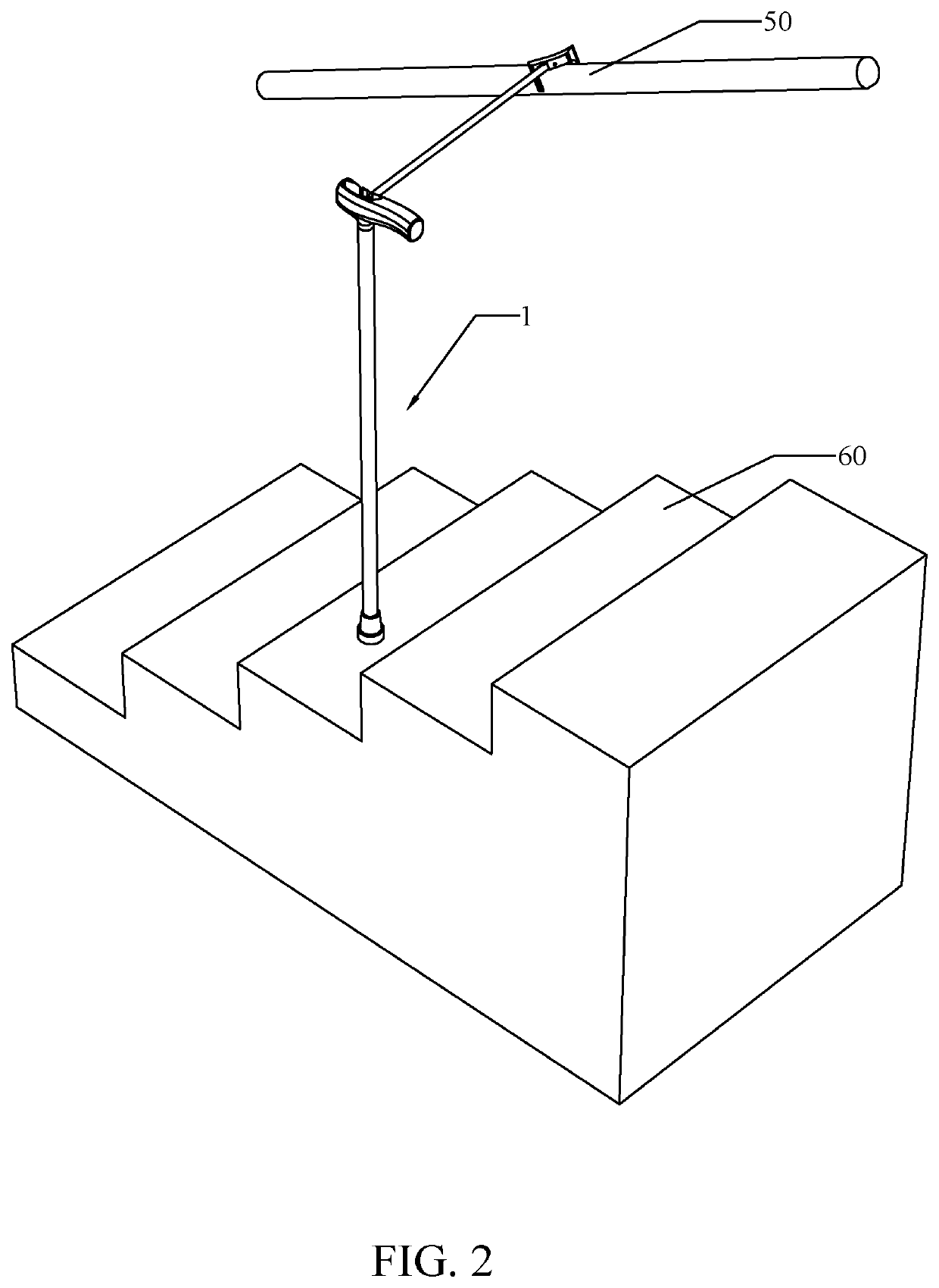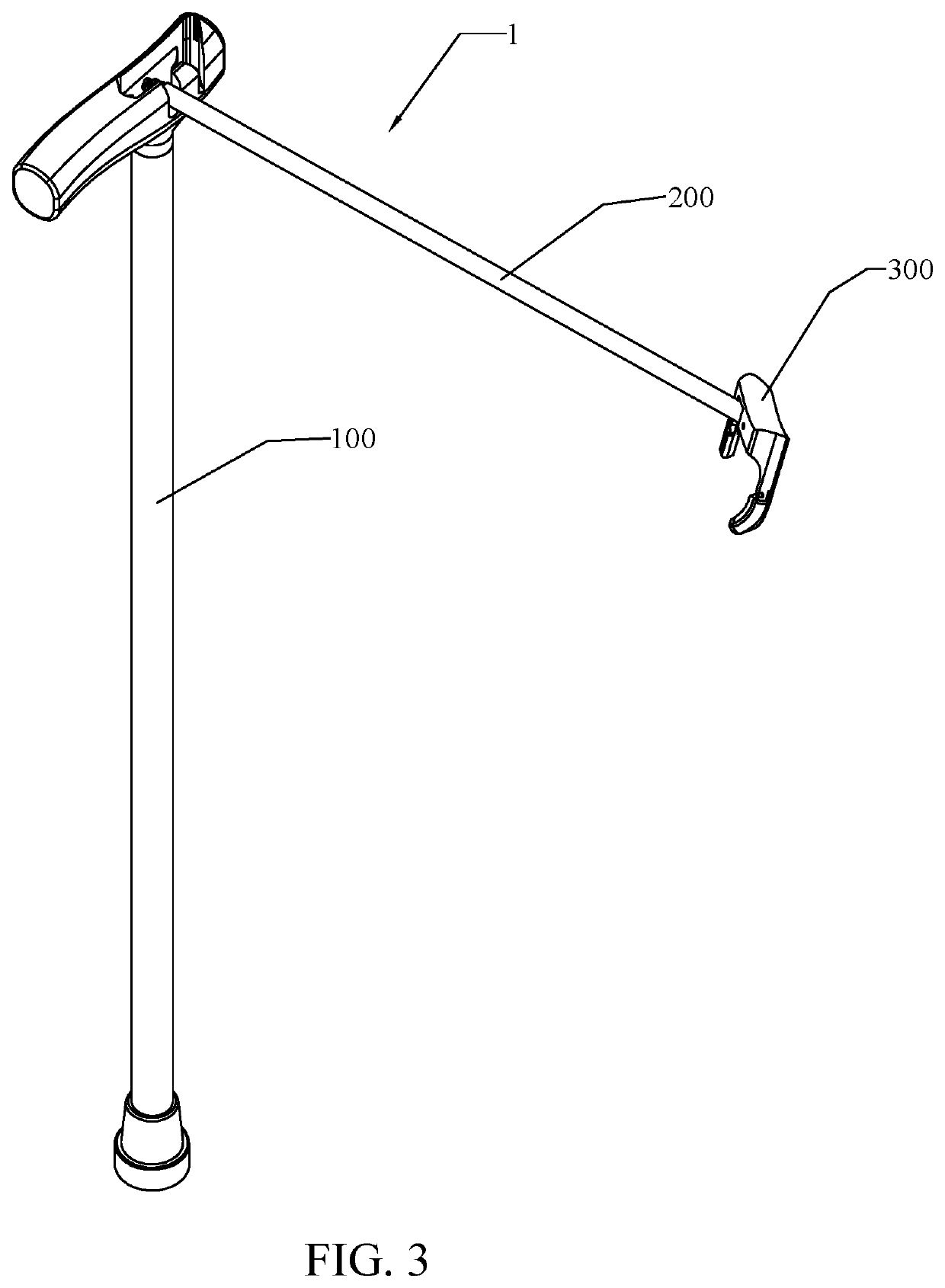Stairway descending assistance device
a technology for stairways and assistance devices, which is applied in the field of mobility aids, can solve the problems of insufficient support for users, difficulty in lowering stairs, so as to reduce the likelihood of falling forward down stairs, and become comfortable and confident in the use of the apparatus
- Summary
- Abstract
- Description
- Claims
- Application Information
AI Technical Summary
Benefits of technology
Problems solved by technology
Method used
Image
Examples
example 1
[0043]Referring to FIGS. 2, 3, 4A-4E, 9A-9I, 10, and 11A-11B, a conventional cane was adapted to serve as weight support assembly 100, adapted to receive connecting assembly 200, for an embodiment where connecting assembly 200 is stowed internal to weight assembly 100. Handrail anchoring assembly 300 was designed to engage with a handrail of diameter 2 inches, with anchor release angle=113 degrees and anchor locking angle=90 degrees. Handrail assembly 300 was designed with inner arm 12 and outer arm 13 having hinged connections with anchor body 11, enabling handrail anchoring assembly 300 to be fully received in handle 15 when in the stowed configuration.
PUM
 Login to View More
Login to View More Abstract
Description
Claims
Application Information
 Login to View More
Login to View More - R&D
- Intellectual Property
- Life Sciences
- Materials
- Tech Scout
- Unparalleled Data Quality
- Higher Quality Content
- 60% Fewer Hallucinations
Browse by: Latest US Patents, China's latest patents, Technical Efficacy Thesaurus, Application Domain, Technology Topic, Popular Technical Reports.
© 2025 PatSnap. All rights reserved.Legal|Privacy policy|Modern Slavery Act Transparency Statement|Sitemap|About US| Contact US: help@patsnap.com



